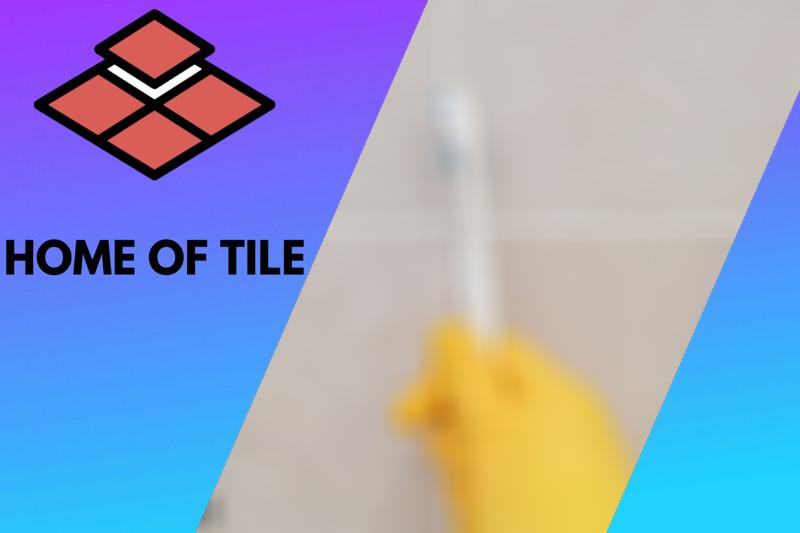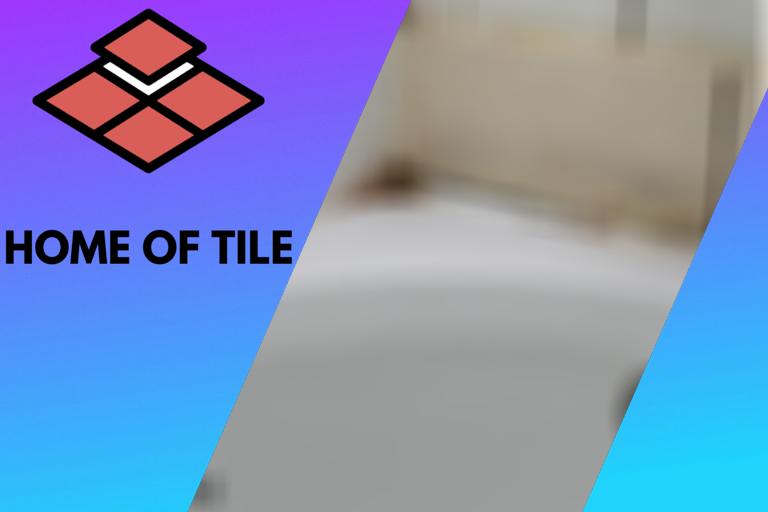How To Keep Grout Clean. What professionals say
Grout is a very porous material that quickly absorbs moisture. This makes it very susceptible to growing mildew and mold. Any grout in your home will require regular upkeep and preventative measures to keep it pristine.
To keep grout clean and free of mold or mildew, you should seal it after it has been installed. After it has been installed and sealed, you should develop and maintain a regular cleaning routine using a store-bought grout cleaner or a more natural at home solution.

In the following paragraphs, I’ll explain why it is vital to seal your grout, some information about commercial grout cleaners, and how to make your own DIY grout cleaning solution. I’ll also detail different tools you can use to clean and maintain the grout in your home.
Contents
Sealing Your Grout
Sealing your grout is the process of adding a protective layer over the grout in between the tiles in your kitchen or bathroom. This protective layer serves to fortify the grout by creating a moisture-proof seal.
When applied correctly, grout sealer will penetrate deeply into the many pores in the grout. The filling of these pores will create a waterproof seal that will allow your grout to stay much cleaner.
Unsealed grout is a breeding ground for all types of bacteria. Any moisture that comes into contact will seep into the grout and stay there, creating either stains or an environment allowing mold and mildew to thrive.
How To Seal Your Grout
If you’ve just installed a new tile in your home, the final step you need to perform is to seal the grout between the tiles. This is essential to keeping the grout clean and free of stains and bacteria. Applying grout sealer is a reasonably straightforward process. It can be pretty time-consuming, though.
- Step 1. The first step is to ensure that your grout has had plenty of time to set and dry. This takes anywhere from twenty-four to seventy-two hours. The longer it is allowed to dry, the better.
- Step 2. When you are sure the grout is thoroughly dry and cured, it’s time to apply the first coat of grout sealer. You should use a tool that can get between the tiles without too much excess sealer on them.
- Step 3. After applying the first coat of sealer. Wait fifteen to twenty minutes to allow the sealer to penetrate into the grout’s pores.
- Step 4. After you’ve given the sealer time to seep into the grout. You can apply a second coat of grout sealer to lock in the waterproof seal.
- Step 5. After the second coat has been applied and allowed to dry for five minutes. You can begin to wipe away any excess sealer from the tiles with a dry towel.
- Step 6. The sealer will need two to five hours to dry before the tile is safe to walk on. The sealer will be thoroughly dried within twenty-four to forty-eight hours.
Sealing grout is an easy way to add an essential layer of protection to your grout. Properly sealed grout is water resistant and thus much less vulnerable to stains, bacteria, and moisture retention. This makes it much easier to keep clean.
Cleaning Your Grout With the Correct Products
There are a great many grout cleaning products on the market. Still, many are expensive and contain ingredients you can purchase yourself for much cheaper. Some commercial grout cleaners are also overly abrasive and could damage your grout.
One thing that is often used to clean grout is bleach. Bleach is a corrosive substance. Though it is not acidic, it can still eat away at your grout, and if your grout is colored, bleach will strip away the color.
Mixing a DIY cleaning solution at home may seem complicated, but it is straightforward and can be done with products you can find around your home. These homemade solutions are better for your grout because they contain more natural ingredients than chemicals.
When you create your own cleaning solution at home, you can also easily adjust the strength or abrasiveness of the substance. These at-home solutions are naturally more gentle on your grout than bleach or commercial grout cleaners.
One of the easiest yet most effective homemade remedies for cleaning grout is a simple mixture of ¾ cup of baking soda, ¼ cup of hydrogen peroxide, and 1 tablespoon of dish soap.
You should mix these ingredients into a paste. You can easily adjust the consistency by adding more hydrogen peroxide if it is too thick or adding more baking soda if the mixture is more liquid than a paste.
What Type of Tools To Use To Scrub Grout
After you have formed a paste of the proper consistency, you can spread this paste onto the grout. Allow it to sit on the grout for a few minutes in order to give the active ingredients in your mixture to work.
Once you have given the mixture a few minutes to work, you can scrub the grout with a grout brush or with a regular old toothbrush. It is essential not to use a tool that is too abrasive, like steel wool or sandpaper.
While using something like steel wool or sandpaper to clean your grout may seem like a highly effective way to remove stains, they are much too abrasive and will affect the structural integrity of the grout. It could cause cracks in the grout and potentially scratch tiles.
When using a gentle cleaner on your grout combined with a tool that isn’t overly aggressive, you can repeat the cleaning process as many times as you need in order to remove stains. Using the proper tools to scrub the grout eliminates the risk of damaging the grout during the cleaning process.
Conclusion
Keeping grout clean is much more related to the frequency with which you clean the grout rather than the cleaning solution and tools you choose to use. Using a gently abrasive cleaning solution and a toothbrush to scrub the grout once a week keeps your grout clean. Allowing stains to develop will make them much harder to remove.
The best way to keep grout clean is to prevent stains in the first place. This can be done by sealing the grout properly, using the correct type of cleaning solution, using the proper tool, and cleaning the grout frequently.







